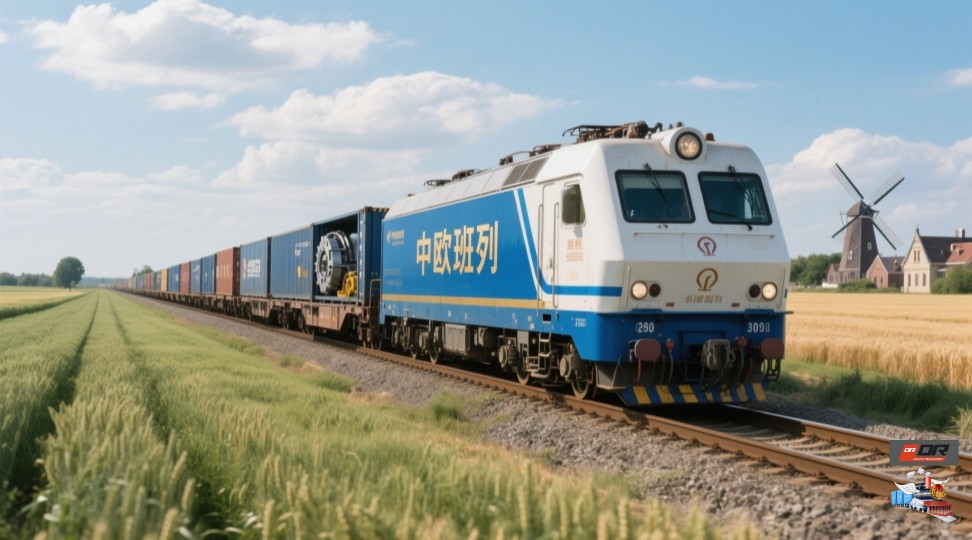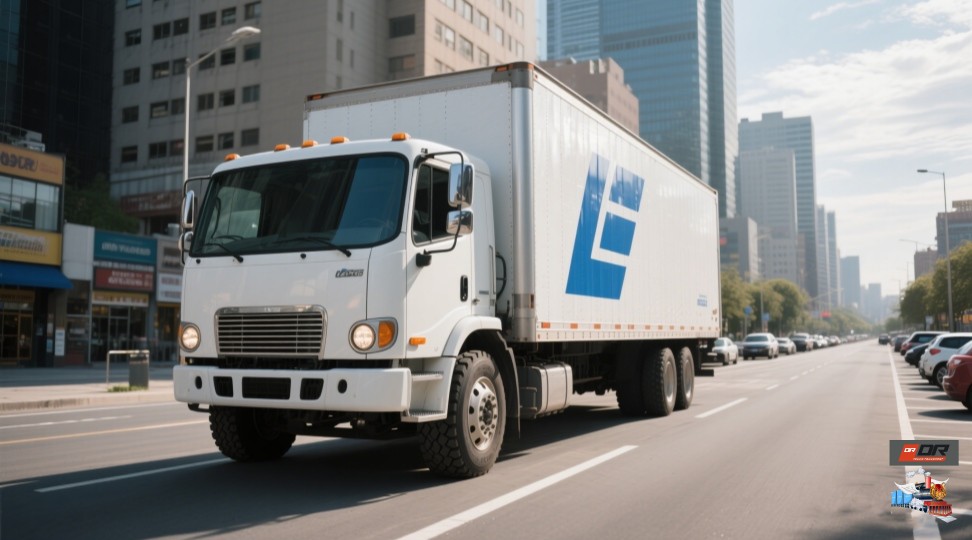يُعدّ نقل LTL (أقل من حمولة الشاحنة) طريقةً اقتصاديةً لشحن دفعات بضائع أصغر (من 30 كجم إلى 3 أطنان) من خلال تجميع طلبات متعددة في شاحنة واحدة. يُحسّن هذا النموذج المساحة ويُخفّض التكاليف، خاصةً للمعدات الهندسية العابرة للحدود مثل الحفارات والرافعات.
تشير البضائع كبيرة الحجم إلى البضائع التي تتجاوز أبعاد الشاحنات القياسية أو حدود الوزن، مثل مداحل الطرق التي يبلغ وزنها 50 طنًا أو شفرات التوربينات التي يبلغ طولها 12 مترًا. تتطلب هذه البضائع تصاريح متخصصة، ومقطورات معززة، وتخطيطًا دقيقًا للمسارات لتجاوز قيود البنية التحتية (مثل ارتفاعات الجسور وعرض الأنفاق).

الإحصائية الرئيسية: في عام 2023، وصل حجم الشحن البري في الصين إلى 4.034 مليار طنمع نمو الطلب على البضائع ذات الحجم الكبير بنسبة 18% سنويا بفضل مشاريع البنية التحتية لمبادرة الحزام والطريق.
تخطيط التوحيد
يستخدم مزودو الخدمات اللوجستية خوارزميات الذكاء الاصطناعي لمطابقة الشحنات. على سبيل المثال، قد تتشارك رافعة متجهة إلى كازاخستان المساحة مع قطع غيار متجهة إلى أوزبكستان، مما يزيد من استغلال المقطورات.
معايير التعبئة والتغليف
الآلات الثقيلة: إطارات فولاذية وصناديق خشبية مقاومة للرطوبة.
المكونات الهشة: طبقات من الرغوة الماصة للصدمات ومضادة للاهتزاز.
ملاحظة تنظيمية: تفرض بلدان آسيا الوسطى استخدام الخشب المعتمد وفقًا لمعيار ISPM-15 لمنع الإصابة بالآفات.
تحسين المسار
تُحلل أنظمة تحديد المواقع العالمية (GPS) حالة الطرق، وأوقات الانتظار على الحدود، والطقس. غالبًا ما تُعطي الشاحنات المُغادرة من شنتشن إلى موسكو الأولوية لـ معبر مانتشولي الحدودي، والتي تعالج أكثر من 500 شحنة كبيرة الحجم شهريًا.
الامتثال الجمركي
المستندات المطلوبة: الفواتير التجارية، وبيانات الشحن، وبطاقات النقل البري الدولي (بالنسبة للدول الأوراسية).
الخطوة الحاسمة: يؤدي تقديم شهادات الوزن والرسومات الهندسية مسبقًا إلى تسريع عمليات التفتيش.
المشكلة: يتجاوز محول بقدرة 400 طن سعة حمولة الجسر في المسارات المباشرة.
الحل: النقل متعدد الوسائط (الطرق + السكك الحديدية + النهر). في عام ٢٠٢٣، شحنت شركة مقرها جيانغسو محولًا كهربائيًا عبر نهر اليانغتسي لتجاوز الطرق السريعة الضعيفة، مما أدى إلى خفض التكاليف بنسبة ٢٥٪.
إدارة التصاريح: روسيا تتطلب إشعارات مسبقة لمدة 3 إلى 5 أيام بالنسبة للقوافل الضخمة، في حين تفرض كازاخستان مرافقة الشرطة للحمولات التي يزيد عرضها عن 3.5 متر.
دراسة الحالة: تطلبت آلة حفر الأنفاق التي يبلغ وزنها 120 طنًا من تشونغتشينغ إلى بيلاروسيا التنسيق مع 6 سلطات وطنية والقيادة الليلية لتقليل الاضطرابات المرورية.

| طريق | وضع | أمثلة على البضائع | وقت العبور |
|---|---|---|---|
| شيآن → ألماتي | الطريق + السكك الحديدية | الحفارات والمولدات | 8-12 يومًا |
| قوانغتشو → موسكو | خط سكة حديد الصين-أوروبا | آلات CNC والتوربينات | 14-18 يومًا |
| تيانجين → فلاديفوستوك | البحر + الطريق | مواد البناء | 20-25 يومًا |
مقارنة التكلفة:
النقل البري: ~35000 ين ياباني لمعدات يبلغ وزنها 20 طنًا إلى كازاخستان.
النقل بالسكك الحديدية: أرخص بنسبة 15% ولكن أبطأ بـ3 إلى 5 أيام.
تسعير الوزن الحجمي
رسوم الشحن تعتمد على متر مكعب (CBM) أو الوزن الفعلي - أيهما أعلى. على سبيل المثال، قد يكون سعر مولد كهربائي خفيف الوزن ولكنه ضخم الوزن 10 أمتار مكعبة أعلى من سعر عارضة فولاذية كثيفة الوزن 5 أمتار مكعبة.
الرسوم الإضافية
رسوم الحجم الكبير: 10-20% إضافية للأحمال التي يزيد ارتفاعها عن 4 أمتار.
تأخيرات على الحدود: حوالي 500 ين/يوم بسبب الاحتجاز في الجمارك بسبب عدم اكتمال المستندات.
تأمين
تتراوح أقساط التأمين من 0.3-1% من قيمة الشحنة. تتطلب العناصر عالية الخطورة (مثل المفاعلات المبطنة بالزجاج) تغطية إضافية.
توزيع الحمل
يحسب المهندسون حدود وزن المحور لمنع إمالة المقطورة. يجب تثبيت حفارة وزنها 30 طنًا على مقطورة منخفضة الارتفاع بطول 13 مترًا لتحقيق التوازن.
تأمين البضائع
سلاسل بقوة شد ≥10000 كجم.
حصائر غير قابلة للانزلاق ومثبتات على شكل حلقة D.
الاستعداد للطوارئ
يحمل السائقون معدات تعزيز الجسور والرافعات والهواتف الفضائية للمناطق النائية.
س1: كيف يتم التقليل من تأخير الجمارك؟
أ: استخدام دفاتر النقل البري الدولي (TIR) وخدمات التخليص المسبق. في عام ٢٠٢٣، قلّصت الشركات التي تتبنى التوثيق الرقمي فترات الانتظار على الحدود بنسبة ٤٠٪.
س2: هل يمكن شحن المعدات الحساسة لدرجة الحرارة؟
ج: نعم. تحافظ الحاويات المعزولة المزودة بأجهزة مراقبة درجة الحرارة بنظام تحديد المواقع العالمي (GPS) على نطاقات ± درجتين مئويتين للأنظمة الهيدروليكية.
س3: ما هو الحد الأقصى للوزن للنقل البري بين الصين وروسيا؟
ج: تسمح التصاريح القياسية بنقل ما يصل إلى ١٠٠ طن. أما الأحمال الأثقل فتتطلب موافقات خاصة ونقلًا تدريجيًا.
الخبرة التنظيمية: التنقل بين التصاريح الأوراسية المعقدة (على سبيل المثال، قاعدة الإخطار المسبق لمدة 72 ساعة في كازاخستان).
تكامل التكنولوجيا: التتبع في الوقت الفعلي عبر أجهزة استشعار إنترنت الأشياء والتوثيق القائم على تقنية البلوك تشين.
التخفيف من المخاطر: خطط طوارئ في حالة إغلاق الطرق، مثل إعادة توجيه حركة الملاحة في أزمة البحر الأحمر عام 2023.
رؤية الصناعة: الشركات التي تستخدم LTL لتقرير المعدات الهندسية انخفاض تكاليف الخدمات اللوجستية بنسبة 22% مقارنة بشاحنات محملة بالكامل.